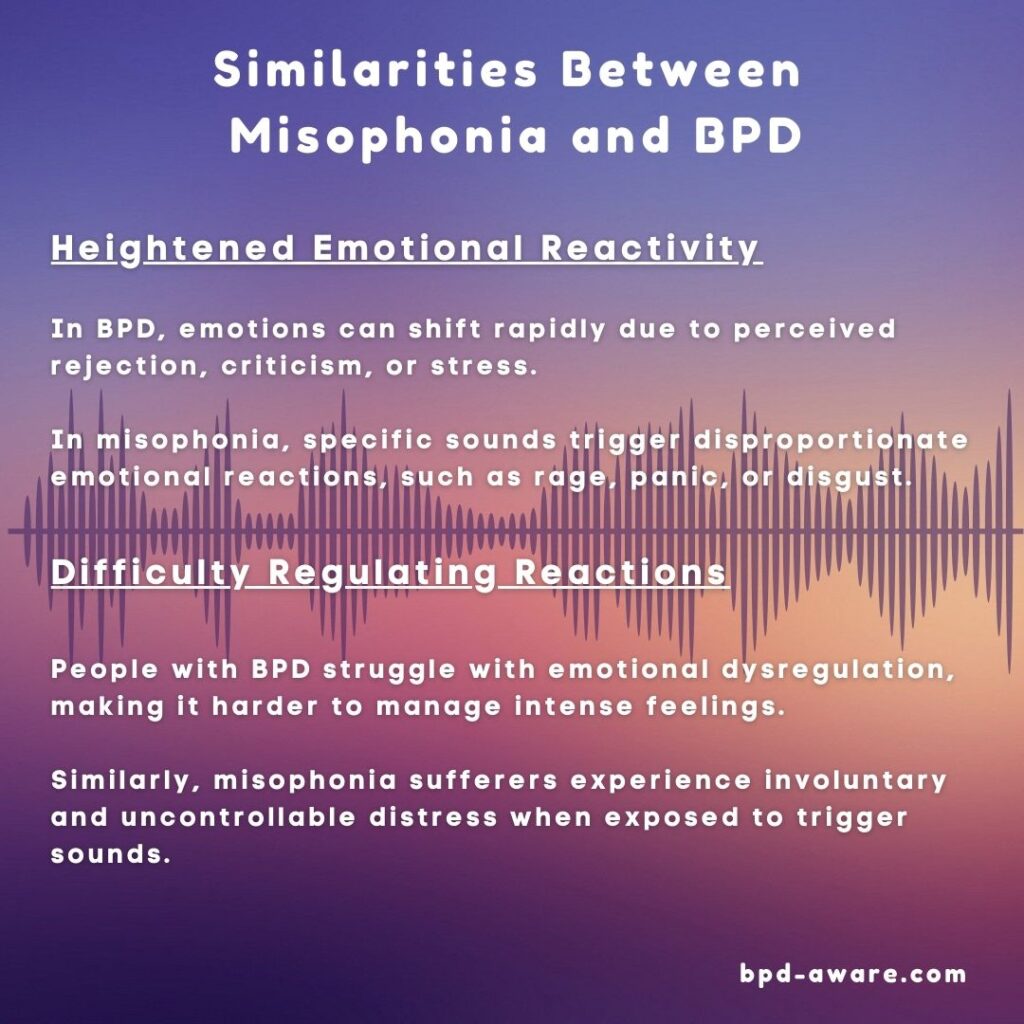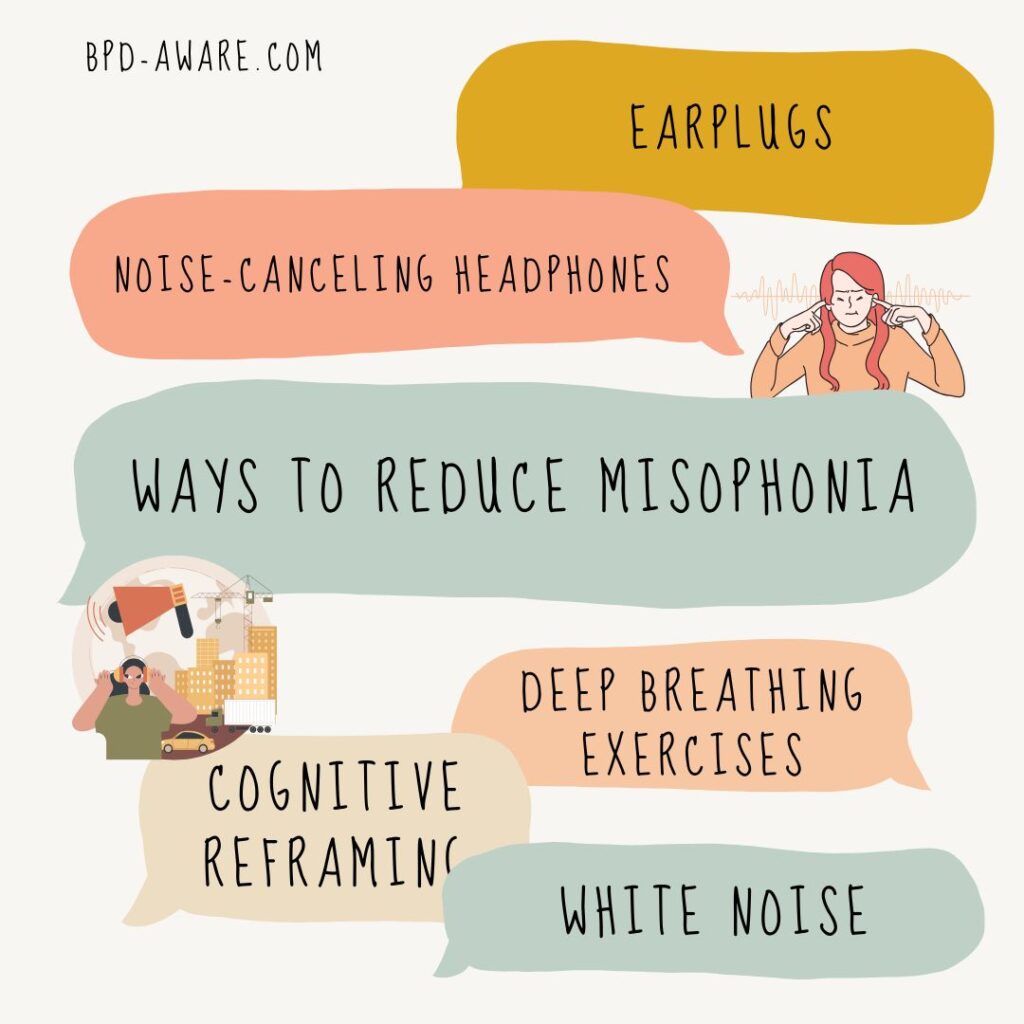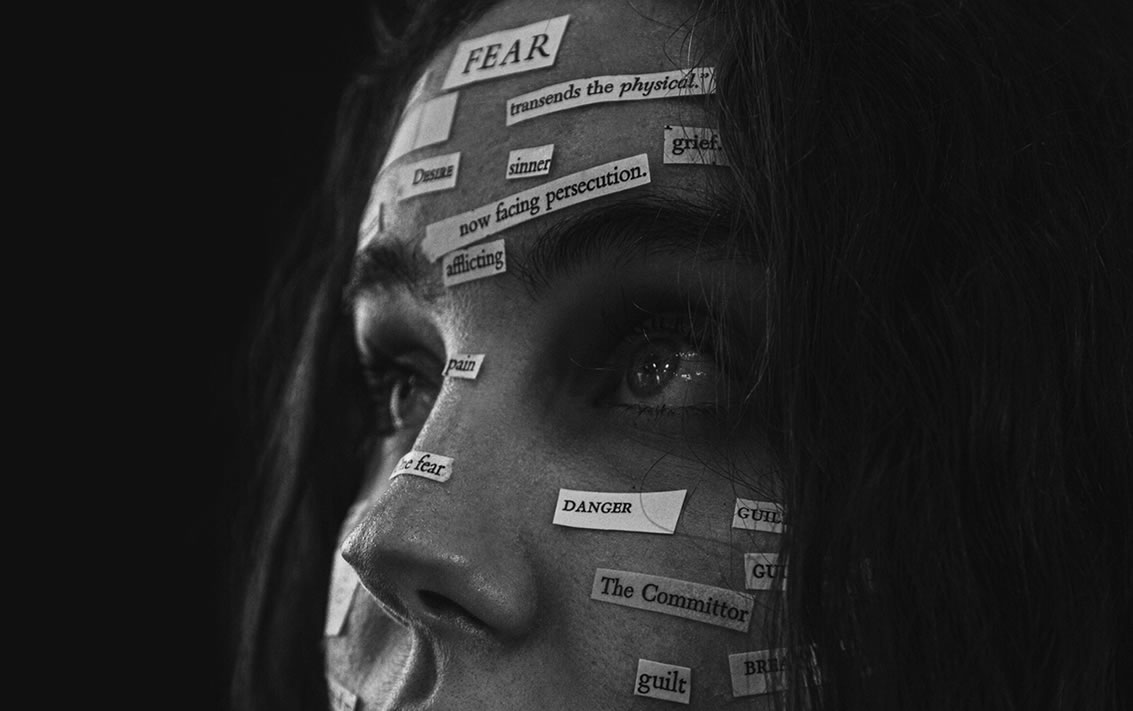Misophonia is a neurological condition where certain sounds trigger intense emotional reactions such as anger or anxiety. Trigger sounds vary from person to person but common triggers include noises made while eating (such as slurping or chewing), repetitive sounds (such as repeatedly clicking a pen or typing on a keyboard), or environmental noises (such as traffic, howling winds, dripping water, or whirring fans).
While this may sound (no pun intended) like a minor issue, it really isn’t. Misophonia isn’t just a dislike of certain sounds, it creates fight-or-flight reactions in people with the condition, something it shares with borderline personality disorder (BPD).
In this article, we’ll dive (quietly) into misophonia, how it impacts people, its connection to BPD, and ways to cope with misophonia.
The Impact of Misophonia
Imagine sitting in a quiet café, trying to enjoy your coffee quietly, when the person next to you starts slurping their drink and loudly chomping away on their muffin. For most people, it’s a minor annoyance. But for someone with misophonia, it can feel like nails on a chalkboard—an overwhelming, rage-inducing experience that makes it nearly impossible to focus on anything else.
Unlike typical sound sensitivity, misophonia is not about volume but rather the specific quality of a sound—often repetitive human-generated noises like chewing, breathing, or pen clicking. People with misophonia frequently describe their reaction as an uncontrollable fight-or-flight response, making everyday interactions incredibly stressful.
Everyday environments can feel like emotional minefields for those with misophonia. Simple activities—like eating meals with family, working in an office, or attending a lecture—can become unbearable if a trigger sound is present. Many sufferers adopt avoidance behaviors, isolating themselves from social situations to minimize exposure. This can lead to feelings of loneliness, frustration, and even depression.
The emotional toll can be particularly severe in relationships. Loved ones may struggle to understand the severity of the distress, sometimes perceiving the sufferer’s reactions as exaggerated or irrational. This lack of validation can create tension and emotional distance, leading to guilt on the part of the person with misophonia and resentment from those around them.
The exact cause of misophonia remains unclear, but researchers believe it involves abnormal connections between the auditory system and the limbic system, the brain’s emotional processing center. Some studies suggest hyperactivity in the anterior insular cortex, a brain region that processes emotions and interoception (the awareness of internal bodily states). Misophonia may also have a genetic component, as it often runs in families. Additionally, people with conditions like borderline personality disorder, obsessive-compulsive disorder (OCD), anxiety disorders, or autism spectrum disorder (ASD) may be more prone to experiencing misophonic reactions.
The Similarities Between BPD and Misophonia
While misophonia is not classified as a psychiatric disorder, it shares some emotional regulation difficulties with certain mental health conditions, particularly borderline personality disorder.
One key similarity between misophonia and BPD is the intensity of emotional reactions. People with BPD often experience heightened emotional sensitivity, impulsivity, and difficulty regulating their moods—traits that are also seen in those with misophonia when exposed to triggering sounds. Just as someone with BPD might feel overwhelmed by abandonment fears or interpersonal conflicts, a person with misophonia might feel emotionally hijacked by an unexpected trigger sound.
Additionally, both conditions can lead to social difficulties and avoidance behaviors. People with BPD may push others away due to fear of rejection or emotional volatility, while those with misophonia may isolate themselves to escape distressing auditory triggers. In both cases, relationships can suffer due to unpredictable emotional responses.
Another parallel is the experience of “emotional flooding”—a state where the brain becomes overwhelmed by emotion, making rational thought difficult. Both people with misophonia and those with BPD can experience episodes of intense distress that seem disproportionate to the triggering event, whether it be a perceived slight or the sound of chewing.
As the two conditions share so much in common, it’s no surprise that people with BPD can really struggle with misophonia. The impact of this can be especially severe as one condition can trigger the other, which can lead to a downward spiral. For example, misophonia may trigger a BPD episode, which in turn causes so much emotional turbulence that it makes the symptoms of misophonia worse, which impacts BPD further, in an almost endless loop.

Coping With Misophonia
Currently, there is no universally accepted treatment for misophonia, but several strategies can help manage symptoms:
Developing Personal Coping Strategies: Some individuals find relief by controlling their environment when possible, such as choosing seating positions in restaurants that minimize exposure to trigger sounds or setting personal boundaries in social situations. Other personal strategies include:
- Using fidget tools or sensory distractions to shift focus away from trigger sounds.
- Practicing cognitive reframing by reminding oneself that the sound is not dangerous.
- Creating a “safe space” at home where noise exposure is minimized.
- Engaging in hobbies or activities that promote relaxation and emotional balance.
- Communicating needs to close friends and family to gain support and accommodations.
- Keeping a journal to track triggers, reactions, and coping successes to identify patterns and improvements.
Noise-Canceling Headphones and Sound Masking: Many people with misophonia rely on noise-canceling headphones or background noise (such as white noise machines or ambient music) to block out triggers in public spaces. Apps that generate pink or brown noise can also provide effective auditory masking.
Mindfulness and Relaxation Techniques: Meditation, deep breathing, and other relaxation strategies can help manage stress responses when a trigger sound is unavoidable. Progressive muscle relaxation and guided imagery can also be effective in reducing emotional reactivity.
Support Groups and Therapy: Connecting with others who experience misophonia can provide emotional support and coping strategies. Online and in-person support groups can help individuals feel less isolated and share effective management techniques.
Some people benefit from CBT techniques that help them reframe their reactions to trigger sounds and reduce emotional distress. These techniques may involve cognitive restructuring to change negative thought patterns associated with trigger sounds and relaxation techniques to help mitigate physiological responses.

Final Thoughts
For those who experience both misophonia and borderline personality disorder, daily life can feel like an ongoing battle against overwhelming emotions and sensory distress. The intense emotional reactivity of BPD combined with the involuntary fight-or-flight response triggered by misophonia can create a cycle of frustration, isolation, and emotional exhaustion.
Navigating relationships becomes particularly difficult, as both conditions can contribute to avoidance behaviors, social withdrawal, and difficulties in emotional regulation. The overlap of these conditions can amplify distress, making it even more critical to develop tailored coping strategies that address both emotional dysregulation and sensory sensitivities.
Unfortunately, there is no quick fix for those suffering from misophonia, especially if they also have BPD. It can take years of experimenting with various strategies and techniques to find what works best for each individual. However, real improvements can be made with a dedicated approach.
Sources, Resources, and Further Reading
- Misophonia Support Groups: https://www.soquiet.org/groups
- Unmasking Misophonia: An Invisible Challenge: https://www.psychologytoday.com/us/blog/living-with-emotional-intensity/202212/unmasking-misophonia-an-invisible-challenge
- Is Misophonia Common With BPD: https://www.reddit.com/r/BPD/comments/mtryb6/is_misophonia_common_with_bpd/
- Is Sounds Sensitivity A Symptom of BPD? https://www.tumblr.com/shitborderlinesdo/130985881869/hello-first-of-all-im-sorry-about-all-the-hate
















